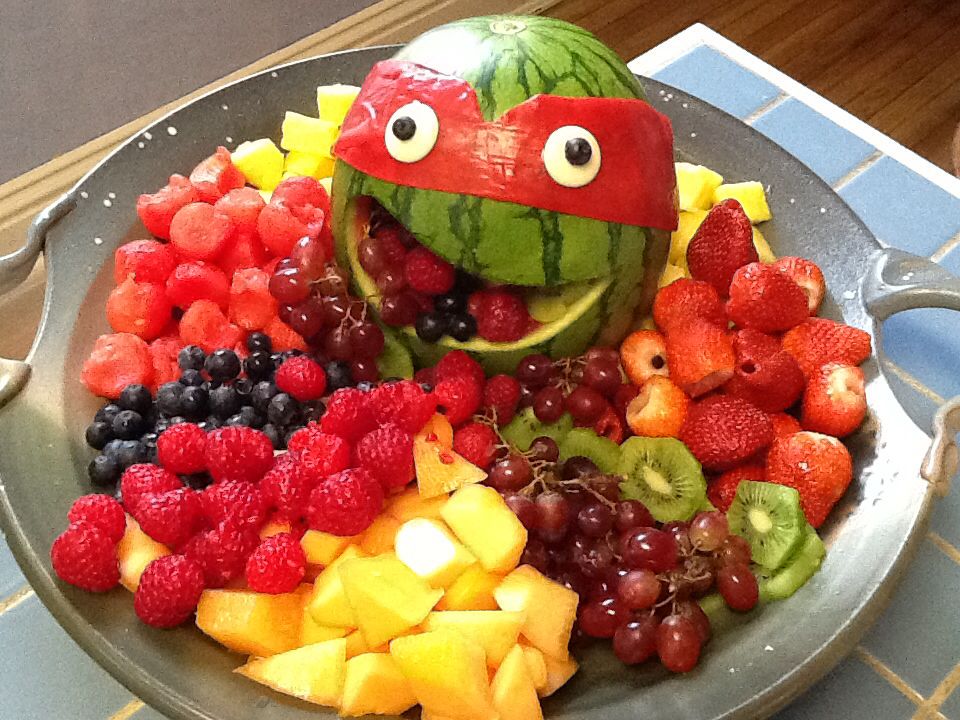What to feed a baby jumping spider
What Do Jumping Spiders Eat?
More Great Content:
When you think of a spider, you may think of something big and hairy, like a tarantula, or something small and poisonous, like a black widow. But what about the jumping spider? Jumping spiders are the biggest family (Salticidae) of spiders, with over 4,000 species worldwide and around 300 in the United States. Jumping spiders can be distinguished from other types of spider by their eight eyes, often furry appearance, colorful markings, powerful front legs, and of course; their incredible jumping abilities.
With all of those unique characteristics, we are left with the question; just what do jumping spiders eat? Here, we’ll explore the jumping spider’s favorite foods, and how they hunt their prey. Then, we’ll compare what wild jumping spiders eat versus what pet jumping spiders eat. Finally, we’ll talk a little more about what baby jumping spiders eat, and how they get to adulthood.
Jumping Spider Diet
Jumping spiders eat flies, wasps, crickets and more.©iStock.com/ViniSouza128
Jumping spiders eat insects like flies, moths, and crickets. They are predominantly carnivores, though they have been known to eat nectar.
In general, jumping spiders eat anything they can get their chelicerae (jaws) around. Flies, mealworms, moths, and other small, defenseless prey are their favorites. Jumping spiders will also eat crickets, cockroaches, and other spiders, if given the chance. Their prey includes:
- Fruit flies
- Blue and green bottle flies
- Fly larvae
- Crickets
- Katydids
- Wasps
- Bees
- Butterflies
- Moths
- Other spiders
- Worms
- Mealworms
- Wax worms
Though jumping spiders are mostly carnivorous, they cannot be called obligate carnivores because they have frequently been observed drinking nectar. There is even one species of jumping spider, Bagheera kiplingi, that primarily eats plant material.
There is even one species of jumping spider, Bagheera kiplingi, that primarily eats plant material.
Jumping spiders have also occasionally been known to eat ants, though ants are far from their favorite prey. Ants, unlike most other insects that jumping spiders eat, have formidable defenses, making them a dangerous meal. There are some species of jumping spider that have specialized as ant-eaters though, and have hunting strategies specifically designed to keep them away from the ant’s strong jaws or spraying acid.
How Do Jumping Spiders Hunt?
Jumping spiders hunt by leaping onto their prey from great distances©iStock.com/memcockers
Jumping spiders, with their eight eyes and near 360 degree field of vision, have excellent eyesight. They use their great vision to spot prey like crickets or flies. Once they spot the unfortunate target, they spool out a string of silk and attach it to something solid. Next, using the silk as a safety line, the jumping spider leaps into the air, lands on its prey, and delivers a venomous bite that quickly incapacitates the victim.
Though jumping spiders tend to be small, less than one inch at the largest, they will attack prey many times their own size. Jumping spiders eat all kinds of insects, and have been known to kill crickets that dwarf them in size. To aid in their hunting, jumping spiders have large, powerful front legs that they use to hold the prey in place. Unlike other kinds of spiders, jumping spiders do not use webs to catch their prey. In fact, the only silk they spin is for their safety lines and the occasional cocoons they spin for molting, laying eggs, or wintering in.
What Do Wild Jumping Spiders Eat?
Wild jumping spiders eat almost any insect unfortunate enough to cross their path. Many species of jumping spider are constantly on the move, constantly hunting. Some species sit and wait for prey to cross their path. But no matter what hunting method the jumping spider uses, they all eat roughly the same thing; insects. Wild jumping spiders eat flies, crickets, worms, and even other spiders. They are mostly carnivorous, though they do drink nectar, which officially classifies them as omnivores.
They are mostly carnivorous, though they do drink nectar, which officially classifies them as omnivores.
Jumping spiders, though formidable, are not dangerous to humans. They don’t generally bite unless in danger of being crushed. The jumping spider’s bite is extremely mild and often does not leave a mark. This makes them a popular spider for people who like to keep spiders as pets.
What to Feed Your Pet Jumping Spider
Captive jumping spiders can be fed flies, crickets, or mealworms©iStock.com/19695866
Many people keep jumping spiders as pets. They can be purchased, but are more often caught outdoors in flower or vegetable gardens. Pet jumping spiders only need to be fed every three days or so, though it is not unusual for them to go a few weeks without eating. Captive jumping spiders eat crickets, flies, and mealworms mostly.
Jumping spider owners should be careful though, as some insects may actually harm their pet jumping spider. Crickets, if not immediately eaten, should be removed from the enclosure, as they can harm the jumping spider. This is particularly true if the jumping spider is older or close to molting. Similarly, owners should never try to feed ants to their jumping spider. Ants can be dangerous, and may even kill the jumping spider, particularly if it is young.
This is particularly true if the jumping spider is older or close to molting. Similarly, owners should never try to feed ants to their jumping spider. Ants can be dangerous, and may even kill the jumping spider, particularly if it is young.
What Do Baby Jumping Spiders Eat?
Baby jumping spiders eat more than adult jumping spiders. They prey on insects just like the adults, albeit smaller insects. Young jumping spiders drink nectar as well, making them omnivores, though they are mostly carnivorous. Small crickets, mealworms, and wax worms are the ideal prey for young jumping spiders.
The Featured Image
© iStock.com/19695866
Share this post on:
About the Author
Brandi Allred
Brandi is a professional writer by day and a fiction writer by night. Her nonfiction work focuses on animals, nature, and conservation. She holds degrees in English and Anthropology, and spends her free time writing horror, scifi, and fantasy stories.
Thank you for reading! Have some feedback for us? Contact the AZ Animals editorial team.
What Do Baby Jumping Spiders Eat?
As an Amazon Associate I earn from qualifying purchases.
What Do Baby Jumping Spiders Eat?Spiders have a terrible reputation for being creepy and crawly, despite making great pets. The jumping spider is a fantastic choice. It isn’t poisonous, and its amazing leaping abilities can amuse you. Despite the fact that it’s a thrilling hunt and captures this spider, it’s essential to remember that you’re taking the creature from its natural environment, which may or may not be the morally acceptable thing to do.
What Do Vampire Squid Eat?
Please enable JavaScript
What Do Vampire Squid Eat?
If you’re looking for a jumping spider in your yard or a nearby park, make sure it’s safe and pleasant. Keep the spider for only a few minutes before releasing it back into the wild.
It’s critical to maintain your pet jumping spider’s feeder bugs. Jumping spiders have a number of options available to them that are simple to maintain.
Every three days, offer your spider some food. However, don’t expect them to consume every time. Age, species, and sex influence how often they consume. Young spiders eat more than mature ones do. Females generally consume more than males. Some spiders may survive for a month without eating. Some jumping spiders go weeks or even months without consuming food.
The best time to feed your jumping spider is first thing in the morning. If they don’t eat it, remove it at night. The majority of jumping spiders are diurnal. That means they are awake during the day. Uneaten food might cause problems or injury to them if left overnight.
Flies A Baby Jumping Spider Feeds on Flies!Flies are an excellent food source for a jumping spider, which will give the spider the nutrients and enrichment it needs.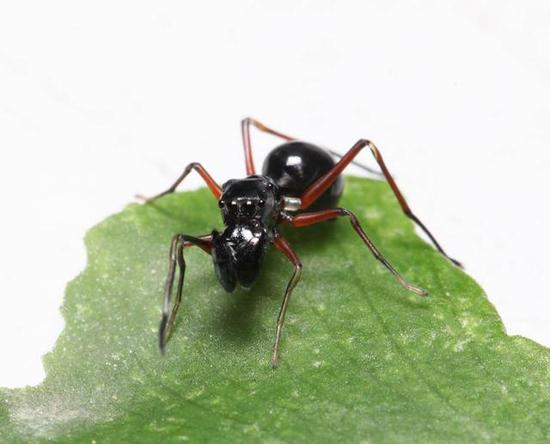 These creatures may be found in pet shops, on the internet, and fly larvae may be purchased at many fishing stores for little money.
These creatures may be found in pet shops, on the internet, and fly larvae may be purchased at many fishing stores for little money.
The lowest-cost flies available in the trade are drosophila melanogaster, which is commonly fed to baby jumping spiders. When you’re ready to feed your bees, the tiny flies will be powerless. They can’t fly and are readily controlled while feeding time approaches. Although their lifespan is restricted, they may be bred in a plastic tub system once the necessary culture has been established.
Do not use the ones buzzing around your home since they may be riddled with pests that are harmful to spiders. They may all be found as larvae (anglers) or pupae (casters) on online auctions. The only food required for fly larvae is a few drops of water to keep them moist and prevent drying out. Place tiny amounts of larvae in several plastic tubs with ventilation, then chill them in the fridge for weeks. Remove them from the refrigerator and place them in a warm location to pupate.
Flies will hatch and require sugar water or honey to survive. They can be kept in the refrigerator to extend their shelf life. Make sure plastic tubes do not have big enough holes for them to crawl through and escape.
Put tub with flies in the fridge for a few minutes to slow down flying insects before feeding jumping spiders with them.
Crickets Baby Jumping Spiders Feast on CricketsThe most prevalent feeder insect found in most pet shops, which can be quickly purchased on the internet, is undoubtedly crickets. You may purchase them in a variety of sizes, including micro crickets, which are ideal for spiderlings and up to sub-adults when fed as adults.
If a hungry jumping spider sees offered crickets, it will react. However, if no reaction is received from a spider within several minutes, you must remove the cricket from the enclosure since it may be harmful to molt, ancient, or starving spiders. When the cricket is left in the enclosure, it may try to bite and even kill the spider. The same can happen with locusts.
The same can happen with locusts.
Mealworms are a cost-effective and simple feeder that you can keep alive for lengthy periods of time or even breed in a sustainable manner. Adult mealworms may be overcome by newborns, but newborn mealworm spiders are not tolerated by adult mealworms. You can cultivate them in plastic containers or drawers if you want to breed them.
If you’re keeping the enclosure in a location with smooth walls, place a few mealworms inside for the spider to devour as it sees fit. However, offer them in moderation, as they are high in fat and do not provide the best nutritional value in the long term. They may be a wonderful addition to a varied diet, but only if eaten in moderation.
Mealworms have powerful jaws, and if they are too big for a spider to handle, they might harm jumping spiders. Mealworms that remain confined for an extended period of time will mature into beetles, which is not desirable in a spider cage.
Waxworm larvae can be offered to a spider as waxworm larvae or as moths once the insect pupates and hatches. They’re easy to come by, and they don’t need much attention. You can keep them for a few weeks at cold temperatures. They are usually sold in round tubs with several waxworms and food doubles as. The pupation and emergence of moths are accelerated by higher temperatures.
Waxworms, like Mealworms, are high in fat and should not be fed on a daily basis. You can only offer them to sub-adult spiders and adult jumping spiders due to their size.
Mealworms may also be fed to spiders, which will consume them at each stage of development. Waxworms, moths that have emerged, and sometimes even pupa are eagerly consumed by leaping spiders.
Roaches A RoachRoaches are one of the most efficient feeders for spiders, and they’re also quite easy to maintain and breed. In addition, crickets provide great nutritional value for your spider because they are high in protein and fat. If you leave roaches in an enclosure with a spider, they will be less likely to harm it. However, if the spider is going into molt, it may cause anxiety and stress.
If you leave roaches in an enclosure with a spider, they will be less likely to harm it. However, if the spider is going into molt, it may cause anxiety and stress.
Baby roaches may be given to Jumping spiders from the fifth instar on. However, you must ensure that the spider can defeat it.
You may buy them in pet stores, on the internet, and from private breeders. Roach colonies may be readily maintained in a plastic tube for years with little effort, and they will rapidly expand if fed regularly and heated appropriately.
What Do Baby Jumping Spiders Eat in The Wild?As a species, baby jumping spiders are omnivores. Within their range, they eat nearly everything that moves. They generally feed on smaller insects or bugs. Even though there are occasions when they attack bigger prey than themselves.
They may be active or inactive, depending on the time of year. Some species are nocturnal. They’re also known for being sluggish in movement and relying on their camouflage to avoid detection by predators. Furthermore, many different species go after the same foods. Certain lepidopterans, for example, tend to prefer insects living in similar habitats.
Furthermore, many different species go after the same foods. Certain lepidopterans, for example, tend to prefer insects living in similar habitats.
Jumping spiders are famous for their leaping ability. Rather than constructing webs to capture their food, they walk on tall grasses or leaves for a bird’s eye view of the insects flying throughout the planet. From the ground, it’s easy to infer that their exceptional vision and sight allow them to hunt down prey from above.
The smaller the target, the higher up it is when a baby jumping spider attacks. They’ll pounce on anything that’s smaller than them from above before sinking their fangs into them and injecting venom to paralyze them.
How To Catch Baby Jumping Spiders? A Baby Jumping SpiderStep 1If you’re searching for a jumping spider, it’s critical that you know what to look for. Make sure you understand this spider’s distinctive characteristics. You’ll be much more likely to find one if you know what to search for.
You’ll be much more likely to find one if you know what to search for.
Jumping spiders Have eight eyes on their face, two of which are huge and two tiny. On top of their head, they have two similar pairs of twin-eye spikes. They may be quite colorful. Males might have brightly colored bands or stripes on their bodies. They can also have fangs and appear to be furred or fuzzy.
Step 2Find a jumping spider. Keep an eye out for leaping spiders when you’re in your yard or garden. They may be found in a variety of locations, including your garden, basement, or attic. These creatures eat typical insects, so they can be spotted in a variety of situations. Baby jumping spiders survive in a wide range of environments, from tropical jungles to chilly woodlands.
It’s vital to note that jumping spiders do not build webs in the manner that most other spider species do. The jumping spider pursues its quarry on foot. Look for them skipping or walking in the grass, or trekking from one plant to another.
You may use beating sticks. You could potentially notice a jumping spider crossing your path if you’re lucky. However, in most situations, you’ll need to make an effort to discover one. A beating stick might help you get a jumping spider out into the open.
A medium-length stick works well as a beater. When looking for spiders, keep it with you. The stick may be used to whack plants. When passing through a group of bushes, softly touch the vegetation as you go by. Any hidden spiders should leap out when the vibration happens. Keep your strikes gentle to avoid injuring any animals that may be hiding.
Step 4To gather the spider, use a vial. When you’ve caught one, you’ll need something to contain it in. Vials are an excellent option for this purpose. You may take many vials with you. Chances are that your spider will appreciate having more room in its container if it is at least 2 inches long.
Glass or plastic vials are compatible.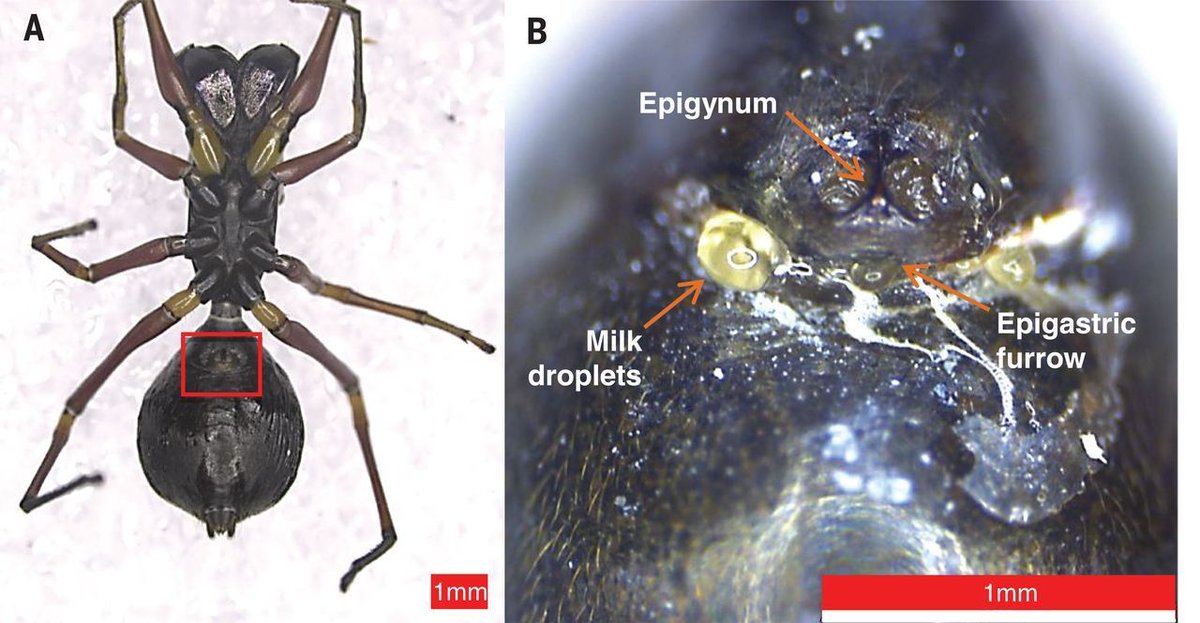 Just make sure they have lids. A glass jar or a plastic container will suffice as well. Make sure to wash and dry the jars thoroughly before looking for spiders.
Just make sure they have lids. A glass jar or a plastic container will suffice as well. Make sure to wash and dry the jars thoroughly before looking for spiders.
Carefully handle the spider. Despite their name, the jumping spider is not considered to be harmful. However, most experts believe that these creatures’ venom requires further study. These spiders are not known for being poisonous, but they may nevertheless be harmful. Place the spider in your jar using the lid as a nudge. You might also consider wearing thick gloves as an extra precaution.
What Are The Natural Predators of Baby Jumping Spiders? A Jumping Spider in The WildJumping spiders are formidable predators. Spiders are professionals when it comes to hunting other creatures, with the exception of a few exceptions. But spiders have foes as well! Who consumes spiders? You might be shocked to learn.
BirdsBirds are significant spiders predators, particularly in tree canopies. Insectivorous birds such as great tits eat a range of insects and jumping spiders. Spiders make up to 75% of the food delivered by great-tit parents to their fledglings right before they hatch!
Insectivorous birds such as great tits eat a range of insects and jumping spiders. Spiders make up to 75% of the food delivered by great-tit parents to their fledglings right before they hatch!
Spider wasps, in the Pompilidae family, are perhaps the most frightening spider foes. Tarantula hawks may be up to 8 cm long and have a 10 cm wingspan! They can consume spiders that are considerably larger than themselves. The spider is first stung by the wasp, paralyzing it almost instantly. However, things get a lot worse from there.
The wasp captures the paralyzed spider and takes it into a tunnel, where it lays one egg on its abdomen. The spider is paralyzed and entombed underground until the wasp larvae emerge to devour it alive.
LizardsLizards take on a wide palette of colors, ranging from black to bright neon hues that are often used in advertising. They develop through always-increasing color complexity. Lizards may also consume spiders. Islands without anoles have 10 to 30 times as many spiders as islands without lizards, suggesting they may be effective predators.
Islands without anoles have 10 to 30 times as many spiders as islands without lizards, suggesting they may be effective predators.
Spiders are eaten by a variety of animals, including monkeys and people. In certain parts of the world, such as Cambodia, fried spiders are a delicacy. We are not a fan of the idea of consuming jumping spiders, which are slow-growing and long-lived creatures, although eating insects is becoming more popular as a more sustainable option than meat.
Amazon and the Amazon logo are trademarks of Amazon.com, Inc, or its affiliates.
Spiders produce milk that is more nutritious than cow's - K-News
A female jumping spider called Toxeus magnus has been found to produce milk to feed her young. Media reports about it.
Now a new study suggests that spiders can produce milky fluids. Previously, scientists assumed that spiders didn't eat anything until they were big enough to hunt.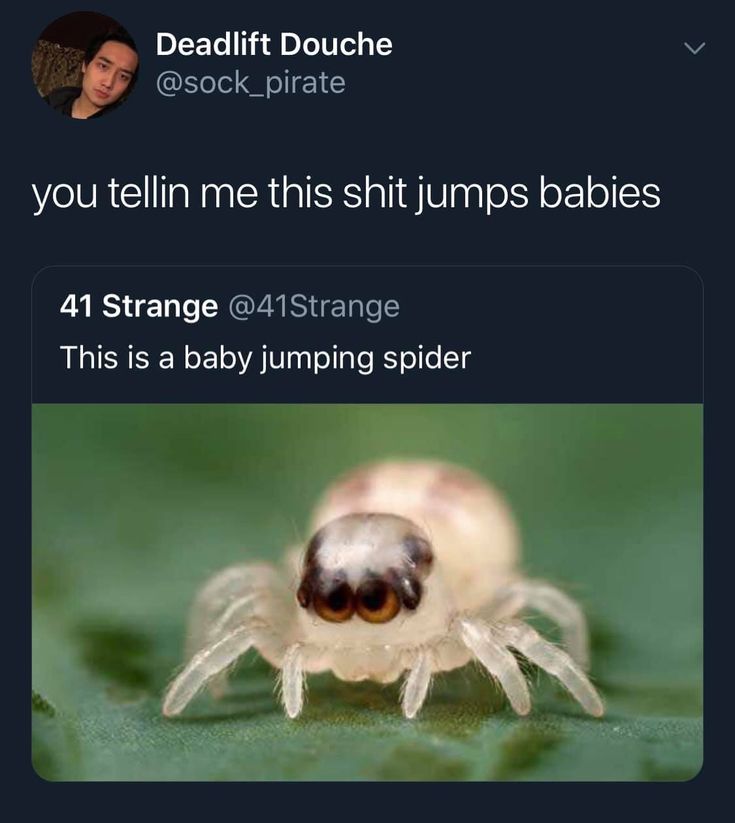 But new work by scientists at the Chinese Academy of Sciences has shown that a species of jumping spider called Toxeus magnus can feed its young.
But new work by scientists at the Chinese Academy of Sciences has shown that a species of jumping spider called Toxeus magnus can feed its young.
While the young spider and their mother do not leave their nest, the juveniles reach adult size in just 20 days. Speaking to the New Scientist, Zhangi Chen, who participated in the study, said: “We couldn't figure out how they keep growing without food until I saw the spider baby clinging to its mom's belly. I had this radical idea that maybe spider mothers are feeding their babies what they produce."
Share
Previous articleAthlete Darya Maslova took third place in the SCO Kunming Marathon
Next articleA model from Astana discussed in social networks is not a deputy
News archive
News archive Choose the month November 2022 October 2022 September 2022 August 2022 July 2022 May 2022 May 2022 April 2022 March 2022 January 2022 January 2022 December 2021 November 2021 October 2021 August 2021 July 2021 May 2021 April 2020, February 2020, February 2020, February 2020. November 2020 October 2020 September 2020 August 2020 July 2020 June 2020 May 2020 April 2020 March 2020 February 2020 January 2020 December 2019November 2019 October 2019 September August 2019 July 2019 June 2019 May 2019 April 2019 February 2019 January 2019 December 2018 November 2018 October 2018 July 2018 June 2018 May 2018 March 2018 January 2018 December 2017 November 2017 November 2017 November 2017 November 2017 October 2017 September 2017 August 2017 July 2017 June 2017 May 2017 April 2017 March 2017 January 2017 December 2016 November 2016 October 2016 September 2016 July 2016 May 2016 April 2016 February 2016 January 2015 December 2015 October 2015 October 2015 October 2015 October 2015 October September 2015 August 2015 July 2015 June 2015 May 2015 April 2015 March 2015 February 2015 January 2015 December 2014 November 2014 October 2014 August 2014 July 2014 May 2014 March 2014 February 2014 2014 December 2013 November 2013 September 2013 September 2013 September 2013 August 2013 July 2013 June 2013 May 2013 A PROLE 2013 March 2013 February 2013 January 2013 December 2012 November 2012 October 2012 September 2012 August 2012 July 2012 May 2012 April 2012 March 2012 January 2012 December 2011 November 2011 October 2011 September 2011 July 2011 June 2011
November 2020 October 2020 September 2020 August 2020 July 2020 June 2020 May 2020 April 2020 March 2020 February 2020 January 2020 December 2019November 2019 October 2019 September August 2019 July 2019 June 2019 May 2019 April 2019 February 2019 January 2019 December 2018 November 2018 October 2018 July 2018 June 2018 May 2018 March 2018 January 2018 December 2017 November 2017 November 2017 November 2017 November 2017 October 2017 September 2017 August 2017 July 2017 June 2017 May 2017 April 2017 March 2017 January 2017 December 2016 November 2016 October 2016 September 2016 July 2016 May 2016 April 2016 February 2016 January 2015 December 2015 October 2015 October 2015 October 2015 October 2015 October September 2015 August 2015 July 2015 June 2015 May 2015 April 2015 March 2015 February 2015 January 2015 December 2014 November 2014 October 2014 August 2014 July 2014 May 2014 March 2014 February 2014 2014 December 2013 November 2013 September 2013 September 2013 September 2013 August 2013 July 2013 June 2013 May 2013 A PROLE 2013 March 2013 February 2013 January 2013 December 2012 November 2012 October 2012 September 2012 August 2012 July 2012 May 2012 April 2012 March 2012 January 2012 December 2011 November 2011 October 2011 September 2011 July 2011 June 2011 Toxeus magnus - frwiki.
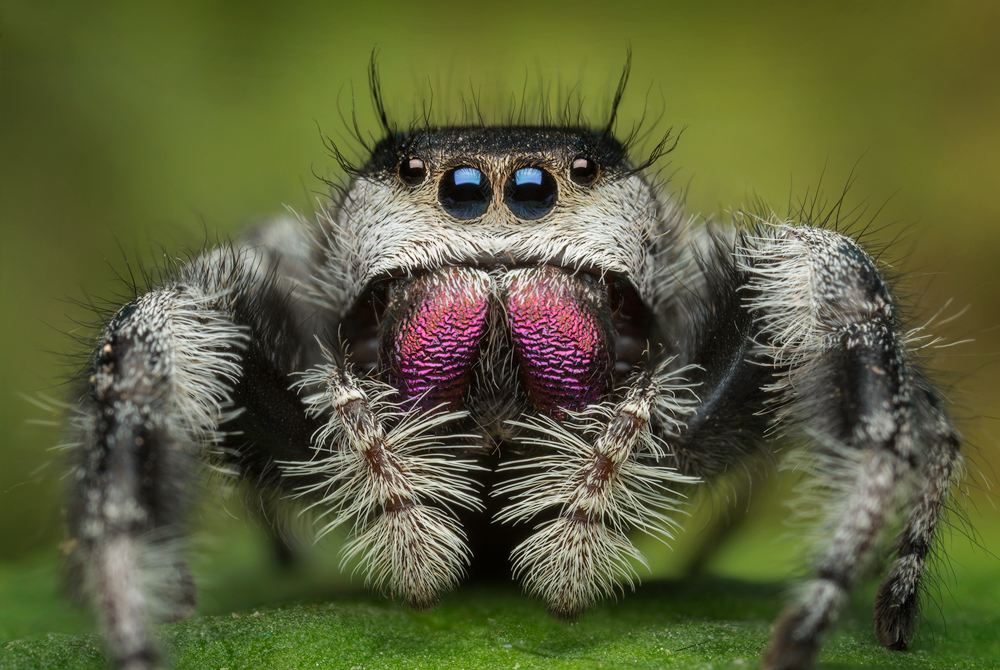 wiki
wiki Toxeus magnus is a species of araneomorph spider in the family Salticidae.
Summary
- 1 Distribution
- 2 Description
- 3 Original publication
- 4 External links
- 5 Notes and references
Distribution
This species is endemic to Taiwan.
Description
Male holotype 10.0 mm . This spider is myrmecomorphic.
She feeds her young for at least 20 days with a yellowish nutritive liquid, which is erroneously called lactation.
Original publication
- Saito, 1933: Notes on spiders from Formosa. Transactions of the Sapporo Natural History Society, vol. 13, pp. 32-61.
External links
- (en) Link to BioLib : Myrmarachne magna Saito, 1933 ( )
- (en) Reference catalog of life : Toxeus magnus (Saito, 1933) (see )
- (fr + en) Ref.
- (en) Reference web project Tree of Life : Myrmarachne magna
- (en) forward reference : Myrmarachne magna Saito, 1933
- (ru) Reference world catalog of spiders : Toxeus magnus (Saito, 1933) in the database of the family Salticidae + (see )
- (en) forward reference : Myrmarachne magna Saito, 1933
Notes and links
- ↑ a and b WSC , consulted during update of external link
- ↑ Saito, 1933: Notes on spiders from Formosa.






